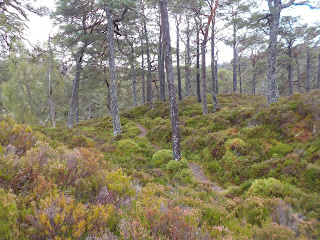Then I went to Scotland. As we rushed past the slate-grey countryside on the train from Edinburgh to Inverness, I popped it in one more time. Not only did Venezuela 70 make perfect sense, I fell in love with it.
WTF? Scotland is as far away from Venezuela in every sense of the word. Before we left, I made a mix of modern Scottish music: Rod Stewart, Big Country, Average White Band, Mark Knopfler. But when I got to the actual country of origin, it didn't seem to fit. What did fit?
- "Love is a Hurtin Thing" by Gloria Ann Taylor.
- "Jade Visions" by Bill Evans.
- "Oh What a Beautiful City" by Reverend Gary Davis
- "Spring" by Vivaldi
- "Watch Out" by Dr. Blue
- And Venezuela 70.
This is the not the first time it's happened to me while travelling. When I first hit Memphis in 2007, I brought along a pretty wide mix of Memphis-bred music: Chuck Berry, Memphis Minnie, B.B. King. But I ended up listening to the Charlatans UK, a band so entangled in 90's Britpop and dance music that they'd never fill the smallest bar on Beale Street. To this day, I cannot listen to them without thinking of Memphis (and I do often!)
There's this great book This is Your Brain on Music that describes the tight relationship between memory and songs. Perhaps a new landscape disrupts the brain so badly that the memory adheres to the closest tune. You can no longer separate the two.
Driving on the Left
When we got off the train to Inverness, I admitted to Amy, "I'm kinda apprehensive about driving." Sometimes apprehension is spot on.
I have never, ever, EVER been as disoriented as I was driving in Scotland. Having driven for 35 years, it has been driven so far into my "muscle memory" that it was almost impossible to unlearn. Just a few tidbits:
- Left turns are easy. Right turns are hard and require attention.
- The rear view mirror is to your left
- Cars come at you on the right. You can't help but swerve a little (in some random direction)
- When you make a right turn and go across the opposite lane, you make a quick glance to your right, even though no car would ever being going that way. The cars in the opposite lane always come toward you.
- There is no shoulder. Anywhere.
- The lane is not wide enough to hold your car .. or at least it seems so
- There's a garbage truck on your ass. Blinking his lights.
- The double-lane road turns into a single lane with passing places. And just ahead of the passing place is a curve, so you have a split second to avoid a collision.
- What the ???? There's a SHEEP in the road ????? A whole friggin' herd!
So here I was, responsible for two lives in the car, plus the lives of a garbage truck driver and a herd of sheep. Was I terrified? Let's just say, it required a crowbar to get my hands off the steering wheel.
Thanks for the reminder, guys! And yes, this is a stock photo. Amy was too busy praying to take pictures.
So If It Was So Disorienting, Would You Ever Go Back Again?
Give me ten minutes and my bags are packed, kemo sabee! Because here's the thing about being human - you don't need to be oriented all the time. If the natives are friendly, if your jacket is waterproof, and you got some sort of granola bar in your pocket, you'll do fine. Stressors are good for the growth of any biological being.
Cheap whisky doesn't hurt either!














